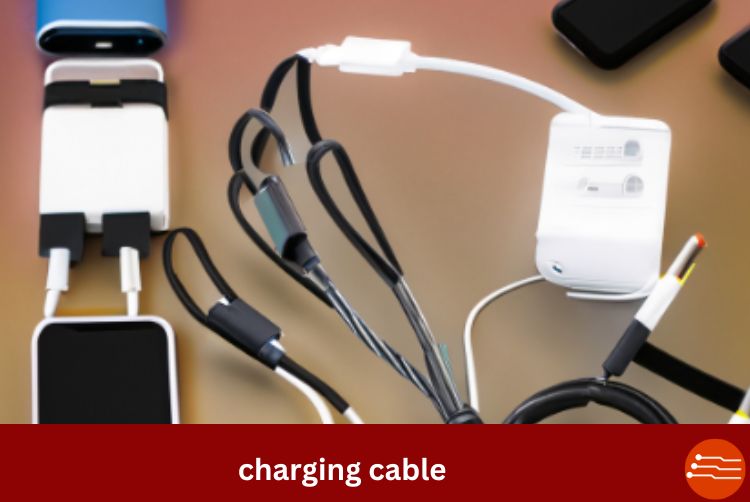In today’s environment, where smartphones are an essential part of our daily lives, charging cables serve an important role in keeping our devices powered and connected. Constantly replacing outdated cables, on the other hand, can be costly and add to environmental waste. You can significantly extend the charging cable lifespan of your charging cable connections by following a few basic procedures, saving both money and avoiding electronic waste.
Table of Contents
10 Tips for Extend the charging cable lifespan are-
- Choose High-Quality Cables
- Avoid Extreme Bending
- Be Gentle During Insertion and Removal
- Keep Cables Tangle-Free
- Protect Connectors
- Store Cables Properly
- Avoid Overheating
- Unplug Carefully
- Use Cable Protectors
- Regular Inspections

Choose High-Quality Cables
Opting for high-quality charging cables from reputable brands may seem like a slightly more expensive investment upfront, but it pays off in the long run. These cables are designed with durable materials that resist wear and tear, reducing the likelihood of fraying or breaking. When shopping for cables, pay attention to user reviews and product specifications to ensure you’re getting a reliable option.
Avoid Extreme Bending
Charging cables are more delicate than they appear, and excessive bending can weaken the internal wires over time. Avoid sharp angles or tight bends when using or storing your cables. If you find yourself needing to maneuver a cable around obstacles frequently, consider using a cable organizer to prevent strain.
Be Gentle During Insertion and Removal
The connections at the ends of your charging cables are the most vulnerable. Always handle the cable carefully while plugging it in or removing it, and avoid breaking it out abruptly. Carefully handling the cables prevents undue stress on the connections and internal wiring.
Keep Cables Tangle-Free
Twisted wires are not only inconvenient to deal with, but they may also cause unnecessary wear and damage. To prevent knots and tangles, store the cables by coiling them loosely or utilizing cable organizers. This simple procedure can go a long way toward protecting the integrity of the charging cable.
Protect Connectors
Dirt, dust, and debris can build up in your charging cords’ connections, creating connectivity problems and serious damage. Consider utilizing dust plugs or coverings that shield the connections while not in use to safeguard them. Cleaning the connections with a soft brush or compressed air on a regular basis helps to maintain their performance.
Store Cables Properly
It is important to carefully store the charging cables to ensure their durability. Avoid firmly wrapping them around items or bending them sharply. Instead, make use of cable organizers, clips, or cable covers to keep your cables tidy and the connectors stress-free.
Avoid Overheating
Heat damages electrical components, including charging cables. Excessive heat can damage the insulating materials and internal wiring of your cables. Keep cables away from heat sources such as heaters, bright sunshine, or electrical equipment that create heat.
Unplug Carefully
When disconnecting your charging cables, avoid trying to pull on the cable for charging itself while unplugging it. Instead, take a strong grip on the connection and carefully pull it from the device. Pulling on the cable might cause stress on the internal wires, which can lead to breakage over time.
Use Cable Protectors
Cable protectors, often known as sleeves, are accessories that protect the cables from wear and strain. They can provide an extra layer of protection against bending and tearing by reinforcing susceptible places such as where the cable is joining the connectors.
Regular Inspections
Periodically inspect your charging cables for signs of wear, including fraying, exposed wires, or bent connectors. Catching these issues early allows you to address them before they worsen and potentially cause charging problems or safety hazards.

Conclusion
By implementing these ten tips for Extending charging cable lifespan, you can ensure that your cables remain reliable and functional over time. With a little care and attention, you’ll not only save money on replacements but also contribute to reducing electronic waste, making a positive impact on the environment.
FAQs on Extending the Charging Cable Lifespan
-
Why do charging cables often fray and wear out quickly?
Charging cables experience wear and tear due to bending, twisting, and general usage. Poor-quality materials and manufacturing can also contribute to faster degradation.
-
Can I use my phone while it’s charging without damaging the cable?
Yes, you can use your phone while it’s charging but try to avoid excessive movements that put a strain on the cable and connector. This will help prevent premature wear.
-
Are all charging cables the same in terms of durability?
No, charging cables vary in terms of quality and durability. High-quality cables are designed to withstand bending and pulling better than cheaper alternatives.
-
How can I prevent my cables from tangling?
To prevent tangling, loosely coil your cables when not in use, and consider using cable organizers or clips to keep them organized.
-
Can I repair a frayed charging cable myself?
Repairing frayed cables can be challenging and may not always yield reliable results. It’s often best to replace damaged cables to ensure safe charging.
-
Is it safe to leave my charging cable plugged in overnight?
It’s generally safe to leave your charging cable plugged in overnight, but avoid exposing it to excessive heat or bending that can lead to damage.
-
Can I charge my device with any USB cable?
While many devices use standard USB connections, it’s recommended to use cables designed for your device to ensure compatibility and safe charging.
-
How can I clean the connectors on my charging cables?
Use a soft brush or compressed air to gently remove dust and debris from the connectors. Be careful not to damage the connectors during cleaning.
-
Do cable protectors affect charging speeds?
Generally, cable protectors don’t significantly impact charging speeds. However, using well-designed protectors can help prevent cable damage.
-
Can I extend the lifespan of a damaged cable?
If a cable is already significantly damaged, it’s best to replace it. Trying to repair extensively damaged cables may not provide reliable results and can compromise safety.


1 thought on “10 Easily Tips to Extend the charging cable lifespan”